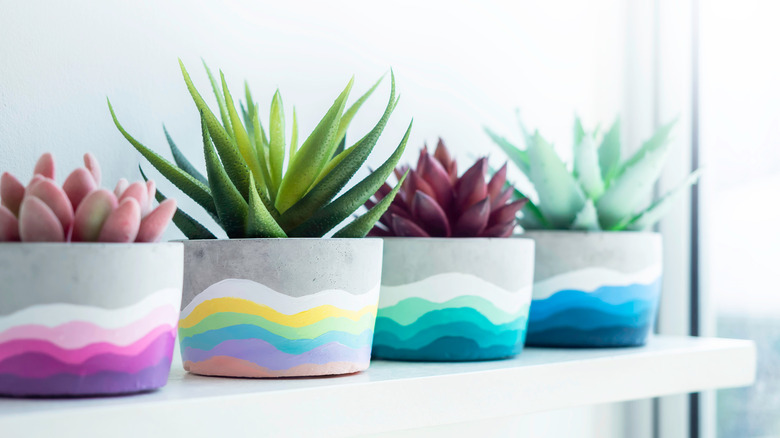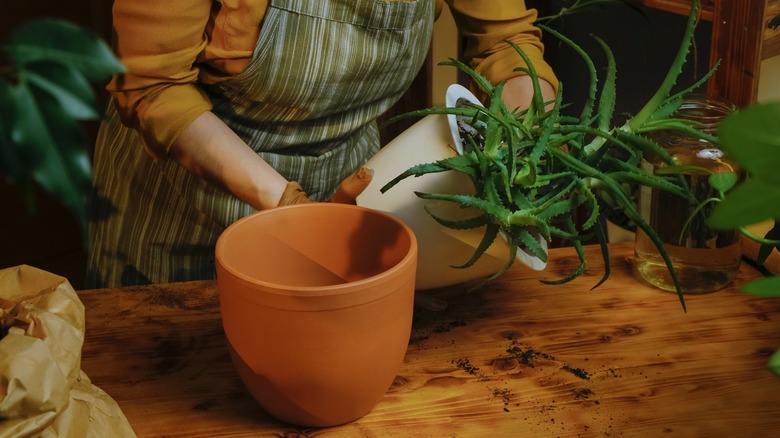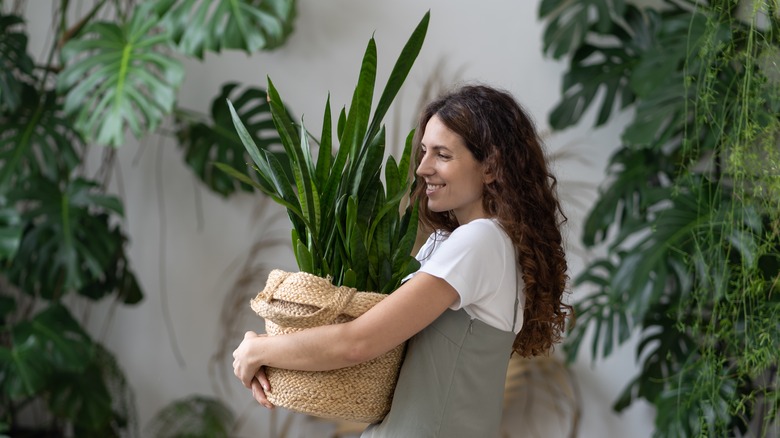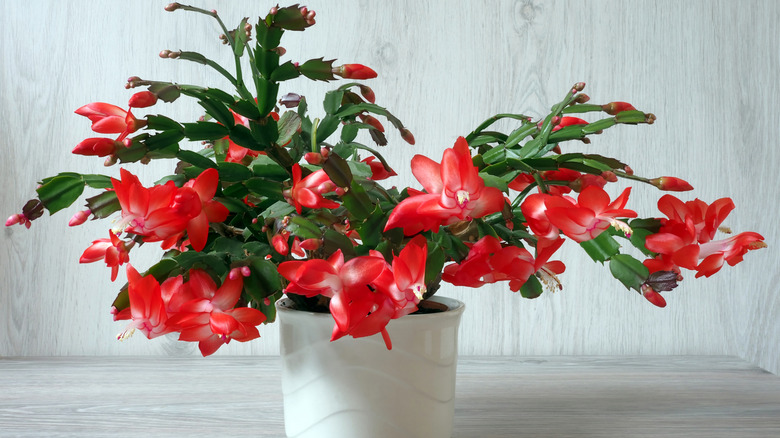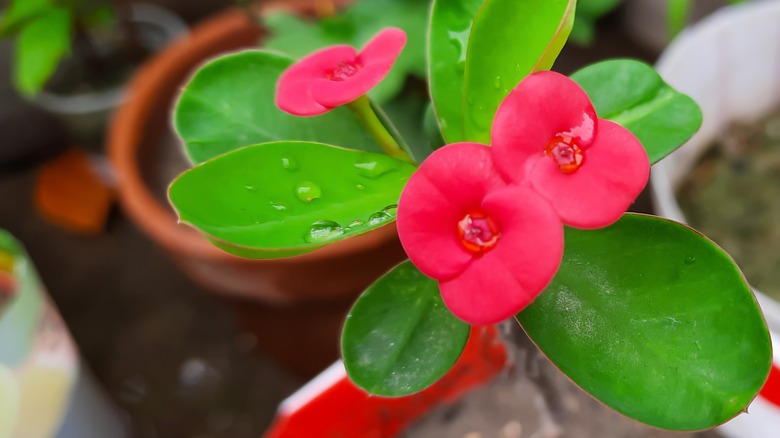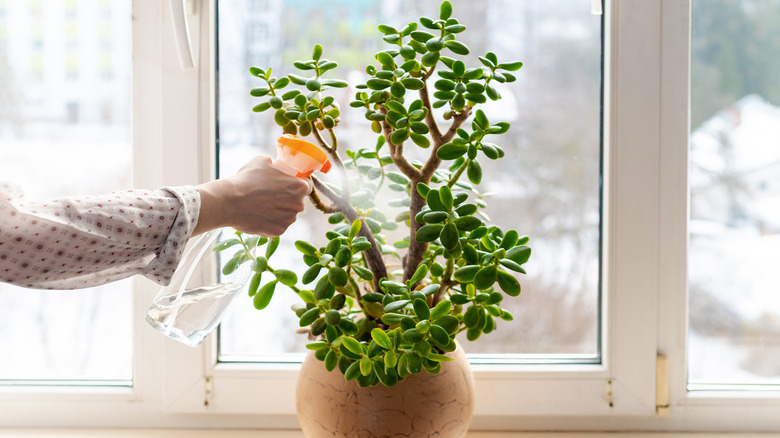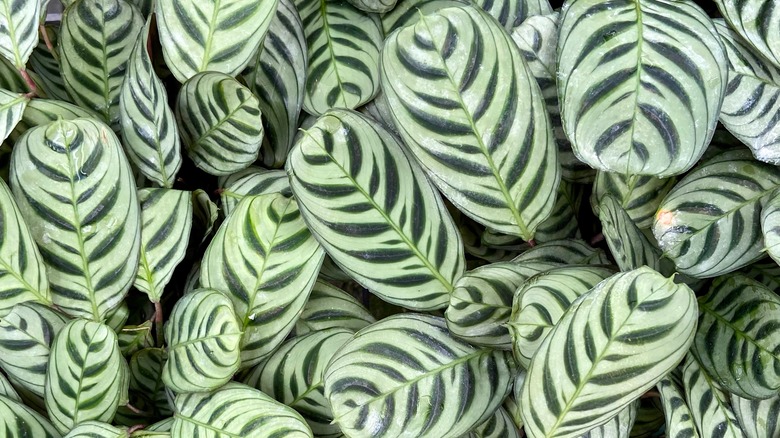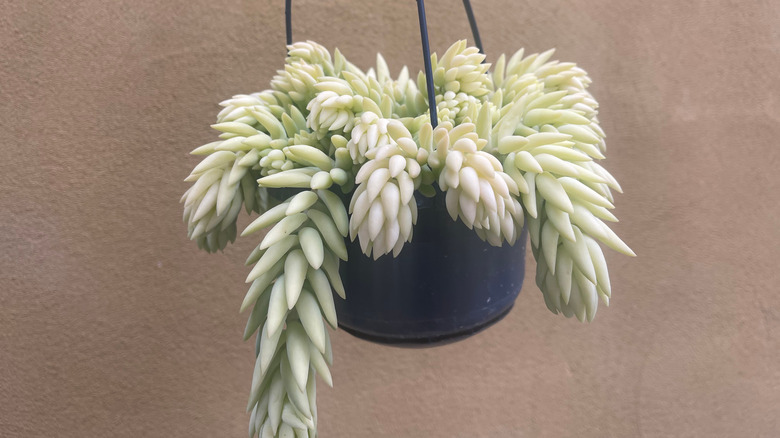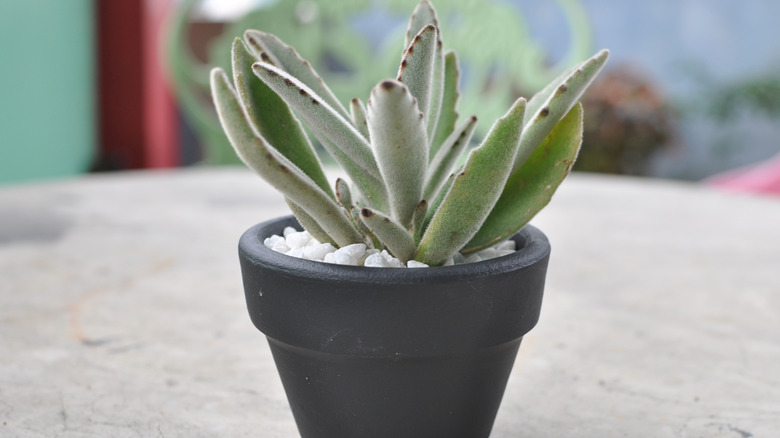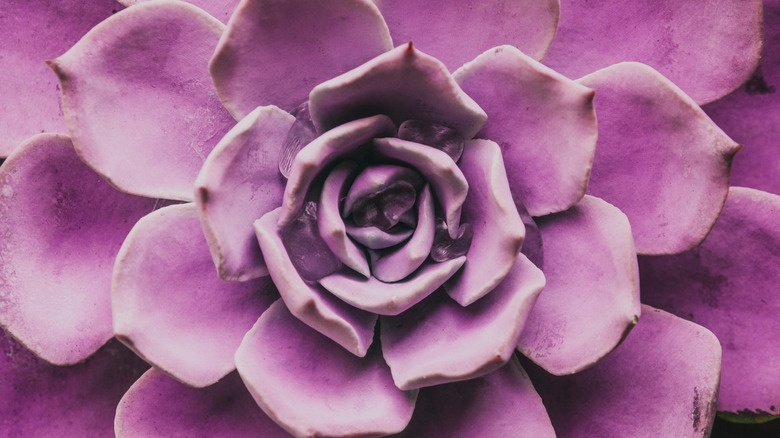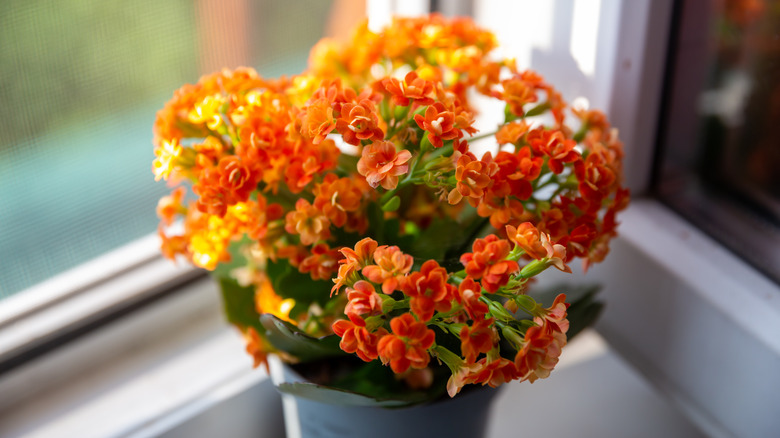10 Best Succulents To Grow Indoors
Succulents can be loosely defined as plants that retain large amounts of water. They are readily recognized by their thick stems and leaves, which are typically described as fleshy, and for good reason. That's where they store the most water, according to Planterina via YouTube. Cacti are included in this group of plants, but while all cacti are succulents, not all succulents are cacti. There are many varieties of colorful succulents that hail from warm climates across the globe.
What makes these plants so popular, particularly indoors, is their ability to thrive with minimal help from the person tending them. As a general rule, plants need two things to grow: light and water. Succulents often defy these supposedly immutable laws of nature, as many do well in shade and can continue to thrive with little to no water for extended periods of time. So even if you believe your thumbs are anything but green, these plants will meet you more than halfway. Take a look at our curated list of popular succulents below, all of which can adapt to a life indoors as well as any person or pet.
1. Aloe vera
Yes, aloe vera (Aloe barbadensis) contains the exact same soothing goo your mom spread over your childhood sunburns. But aloe vera can sting too. The plant has serrated thorns along the edges of its leaves, so keep this inedible plant away from pets and children. Choose a pot that's porous (Almanac.com recommends terracotta).
Sunlight needs: This plant requires sunlight that's bright, but indirect.
Water needs: Aloe vera responds best when deeply and thoroughly watered, then left to dry until the top third of the soil is dry. Excessive watering can cause root rot.
2. Snake plant
If the snake plant (Dracaena trifasciata) had a personality, it might be Type A. Their tall, bold leaves command attention and project an image of aggressive vitality. They're also among the easiest to maintain. Fun fact: snake plants recently got a botanical name change from Sansevieria to Dracaena, according to Plant Care Today.
Sunlight needs: Snake Plants grow quicker in brighter light than dim.
Water needs: These plants don't require much water. On the contrary, the bigger risk is overwatering and root rot. Water them once the soil is dry. Puckering leaves will tell you it needs attention.
3. Christmas cactus
The Christmas cactus (Schlumbergera bridgesii) flowers during wintertime. Because it propagates so easily, it's also a popular holiday present. Oddly enough, it can be hard to tell Christmas cacti from Thanksgiving and Easter varieties, according to Gardening Know How.
Sunlight needs: This plant is finicky. It adapts to low light, but blooms best with more. Too much light scorches its leaves, so be observant.
Water needs: These cacti want water more frequently during the spring and summer months. Allow the soil to dry between watering, but not completely. And never let it rest in water.
4. Crown of thorns plant
Provided enough light, the crown of thorns (Euphorbia milii) blooms throughout the year. According to Crazy Plants Crazy Critters, the crown of thorns won't take much of your time in care, but will reward you for every moment spent. It provides best results when fertilized once every other season with a 10:10:10 balanced mixture.
Sunlight needs: Crown of thorns does well under medium light, but does best under direct light conditions.
Water needs: These plants need little attention, but will tell you more water is needed if they begin to shed leaves.
5. Jade plant
Jade plants (Crassula ovata) provide a textbook example of why casual gardeners love succulents. These plants can thrive for generations and reach heights of three feet. The plant experts at Drought Smart Plants say jade plants actually appreciate drought. Avoid overwatering and you'll get years of beauty from a robust plant with glossy verdant leaves.
Sunlight needs: Full sunlight is ideal.
Water needs: Don't water on a schedule or let your plant soil get completely dry; just water when the topsoil is no longer moist.
6. Zebra plant
Zebra plants (Aphelandra squarrosa) don't take up much space, but will give you an impressive splash of green reminiscent of chewing gum stripes. In addition, you'll get a substantial golden bloom late in summer or just as fall arrives. Epic Gardening says it's not the succulent with the lowest maintenance, but what it provides in return will make it all worth it.
Sunlight needs: Indirect bright light is best.
Water needs: Soak your soil every two to three weeks, but make sure the plant is dry enough to need watering in order to avoid root rot.
7. Burro's tail
Know how some cats make better roommates than buddies? Gardenista basically says the same can be said of burro's tail (Sedum morganianum). It loves to be ignored, and will drop its tiny leaves if you irritate it in the slightest way. Pot it, suspend it in a corner, and visit it as rarely as you would an unpleasant relative.
Sunlight needs: Bright shade or partial sun are preferable. Direct sun will scorch your plant.
Water needs: Give the soil a thorough soak and wait to water until the topsoil is dry.
8. Panda plant
House Plants Expert describes the humble Panda plant (Kalanchoe tomentosa), also called donkey ears, as velvety soft and just as adorable as its nicknames. Easily identified by its tiny white hairs, this native of Madagascar actually appreciates the arid heat of an indoor winter home. They can grow up to two feet tall and are perfect for that empty warm spot in your office.
Sunlight needs: Pandas prefer medium light to bright sun.
Water needs: They're very susceptible to root rot, so water rarely and carefully.
9. Echeveria
Are you an absent-minded gardener? Always called away? Can't spend much time tending to demanding plants? Succulents Box explains that Echeverias (Echeveria sp.) are natives of the desert that excel under drought-like conditions, yet nonetheless appear in a wide array of colors. These plants do have one special request, however. Echeverias favor clay pots. Why? Because they allow water to evaporate.
Lighting needs: This plant loves the sun, plain and simple. Give it 4 to 5 hours of direct sunlight daily.
Water needs: Make sure your container drains well and let the soil dry before you water.
10. Kalanchoe tarantula
Kalanchoe tarantula plants (Kalanchoe katapifa 'Tarantula'), with limbs like spider legs, are among the best to keep in an office or interior space in order to provide a splash of color, say the authorities at Mountain Crest Gardens. They're low maintenance and bloom in flowers of pink and red, sometimes in both fall and spring. Tarantulas like a potting mixture with a high percentage of perlite, pumice, or coarse sand.
Lighting needs: Indirect bright light is perfect.
Water needs: Soak them enough for water to run out drainage holes, then repeat when the soil dries out completely.
